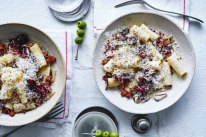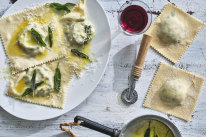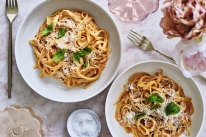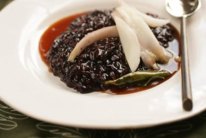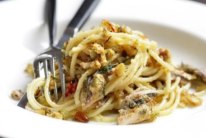Egg pasta
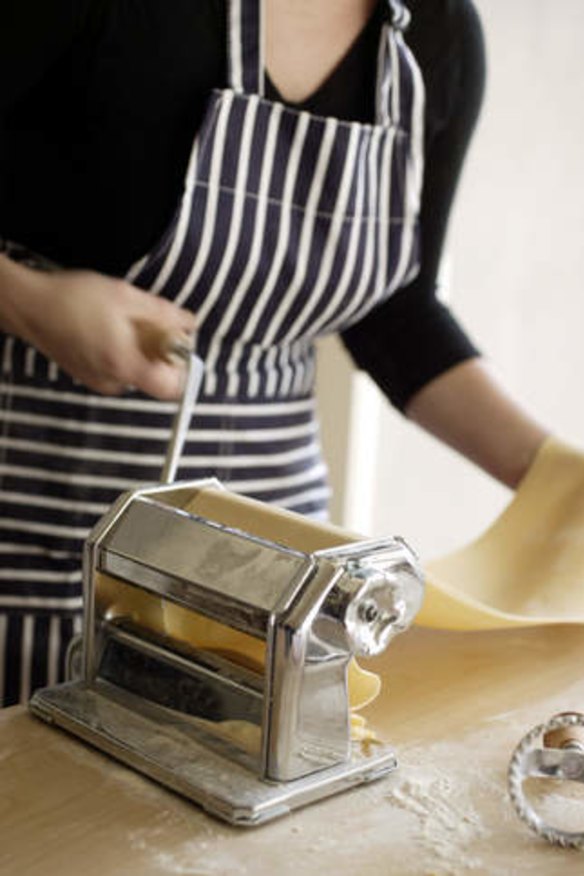
You can roll out pasta dough by hand, using a rolling pin, but it's easier with a machine. I recommend a small pasta machine with a handle - it is all you need; the bigger ones aren't necessarily much better and are considerably more expensive.
Ingredients
400g plain flour*
4 large free-range eggs*
* It is difficult to give the exact quantities of flour and egg for pasta, as it depends on how large the egg is and how much the flour will absorb, but a good rule of thumb is to use 1 egg to every 100g of flour. For example, for 4 people use 2 eggs and 200g flour.
Method
Pour the flour on to the bench so it forms a mound. Make a large hollow in the centre and break in the eggs.
Using a fork, whisk the eggs until combined and start drawing in the flour. Use your hands to bring the mass together and begin kneading. Keep a little flour to the side to add if the dough feels a little sticky. It is much easier to knead a little more flour into a slightly wet dough than the other way around.
Continue to knead until the dough feels smooth. Cover with plastic and allow to relax at room temperature for 30 minutes.
You are now ready to roll out the pasta. Bring a large pot of water to the boil with plenty of salt. This is really important: first, because if you don't have enough water the result will be gluggy pasta and second, the salt is necessary to flavour the pasta - I think there's nothing worse than pasta boiled in unsalted water.
Divide the dough in half (this makes it easier to manage once the pasta is rolled out to a long, thin sheet) and begin with the largest setting on the machine. Flatten the dough so it will fit through the rollers, and begin to feed it through with one hand while turning the handle with the other. Fold the dough in half on itself and feed it through again a few times. Make the setting one notch smaller and repeat until you have worked down to the second-last or last setting, depending on how thick you want your pasta.
If using the pasta to make lasagne or spaghetti, roll out all the dough into sheets and lay them out on tea towels sprinkled lightly with flour. Allow them to dry for at least 10 minutes before cooking. For filled pasta such as ravioli, cut and fill the pasta sheet as you go rather than rolling out all the dough first.
Cook pasta in boiling water until al dente - that means the pasta still has some resilience; it should not be soft and mushy.
Appears in these collections
The best recipes from Australia's leading chefs straight to your inbox.
Sign upFrom our partners
Similar Recipes
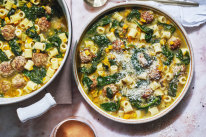
This Italian wedding soup is a marriage of flavours, and you’ll be making it on repeat
- 30 mins - 1 hr
- Danielle Alvarez

Sicilian-style pasta with swordfish, cherry tomatoes, mint and pistachios
- 30 mins - 1 hr
- Danielle Alvarez

